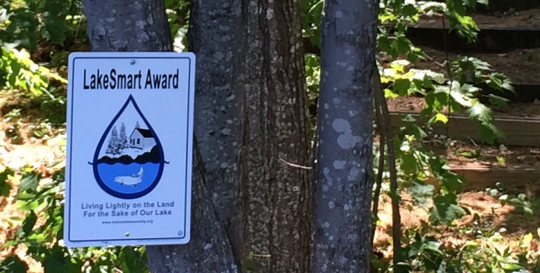A vegetated buffer is a must for protecting the lake’s water quality, and a buffer is incomplete without trees. Large trees do an outsize portion of lake protection, as well as provide the duff and stable environment the buffer needs. A short list of what trees on the shoreline provide is below, and more in depth discussion on the next page.
- Consume and regulate water flow
- Filter out harmful chemicals and pesticides
- Stabilize soil
- Cool shore side water temperature
- Provide habitat for both shore side and lake animals
Regulate Water Flow Leaf canopy intercepts rainfall, slowing its fall to the ground. This allows the underlying duff to absorb rainwater more effectively in severe conditions. It also minimizes erosion and soil compaction. A recent Forest Service study estimated that a single small tree was able to intercept 67% of the rain that fell within the canopy. 1
Increase Soil Absorption Tree roots also break up compacted soil and open up space so that water can be absorbed more effectively into the soil. Decomposing tree leaves and pine needles create the spongy duff layer that soaks up water.
Consume Storm Water Trees use tremendous amounts of water for growth. A single mature tree can consume over 100 gallons of water in a day2!
Trees Remove Pollutants Studies in Maryland showed reductions of up to 88% of nitrate and 76% of phosphorous through a forest buffer3. A Maine study concluded: “… a 15 m (50 ft) natural buffer was effective in reducing phosphorous concentrations to background values4 …”
The bottom line: A vegetated buffer requires inclusion of trees to do its lake protection job. A lakeshore buffer without trees severely compromises water flow regulation, water consumption and pollutant removal typically facilitated by forest vegetation.

